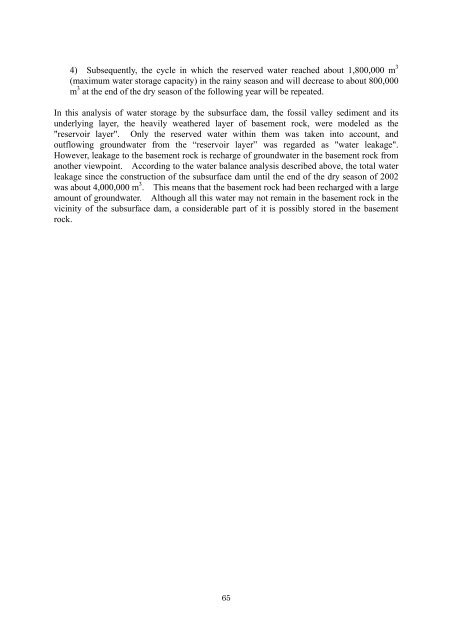SubSurface Dams - Sustainable Sanitation and Water Management ...
SubSurface Dams - Sustainable Sanitation and Water Management ...
SubSurface Dams - Sustainable Sanitation and Water Management ...
You also want an ePaper? Increase the reach of your titles
YUMPU automatically turns print PDFs into web optimized ePapers that Google loves.
4) Subsequently, the cycle in which the reserved water reached about 1,800,000 m 3(maximum water storage capacity) in the rainy season <strong>and</strong> will decrease to about 800,000m 3 at the end of the dry season of the following year will be repeated.In this analysis of water storage by the subsurface dam, the fossil valley sediment <strong>and</strong> itsunderlying layer, the heavily weathered layer of basement rock, were modeled as the"reservoir layer". Only the reserved water within them was taken into account, <strong>and</strong>outflowing groundwater from the “reservoir layer” was regarded as "water leakage".However, leakage to the basement rock is recharge of groundwater in the basement rock fromanother viewpoint. According to the water balance analysis described above, the total waterleakage since the construction of the subsurface dam until the end of the dry season of 2002was about 4,000,000 m 3 . This means that the basement rock had been recharged with a largeamount of groundwater. Although all this water may not remain in the basement rock in thevicinity of the subsurface dam, a considerable part of it is possibly stored in the basementrock.65
















